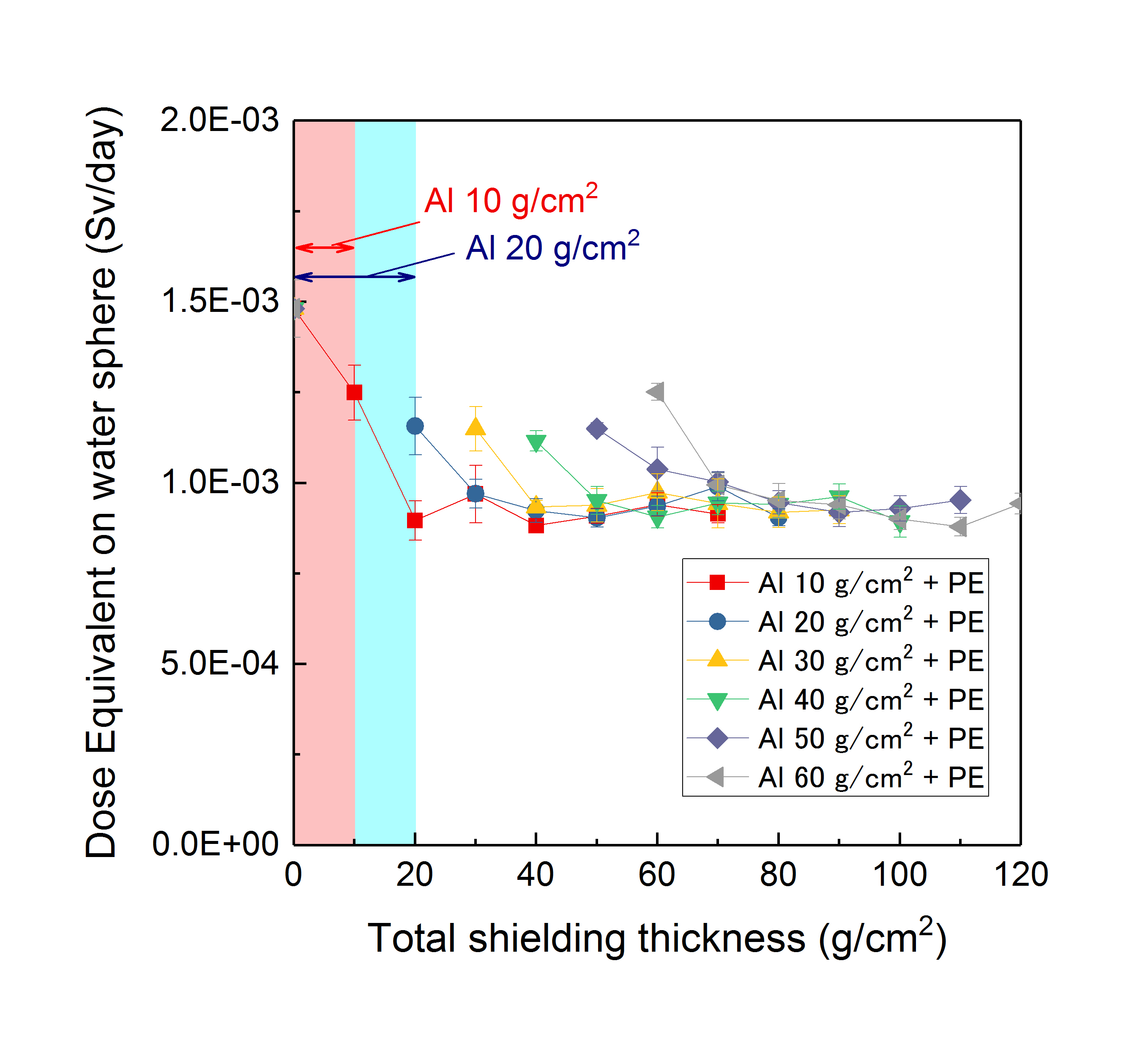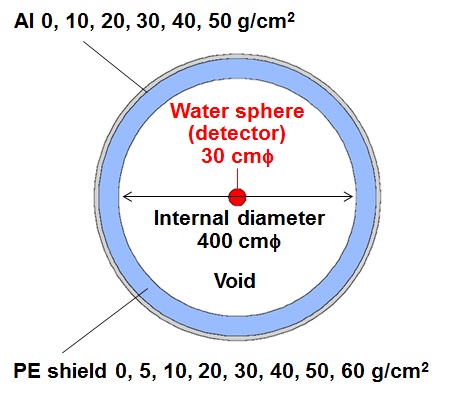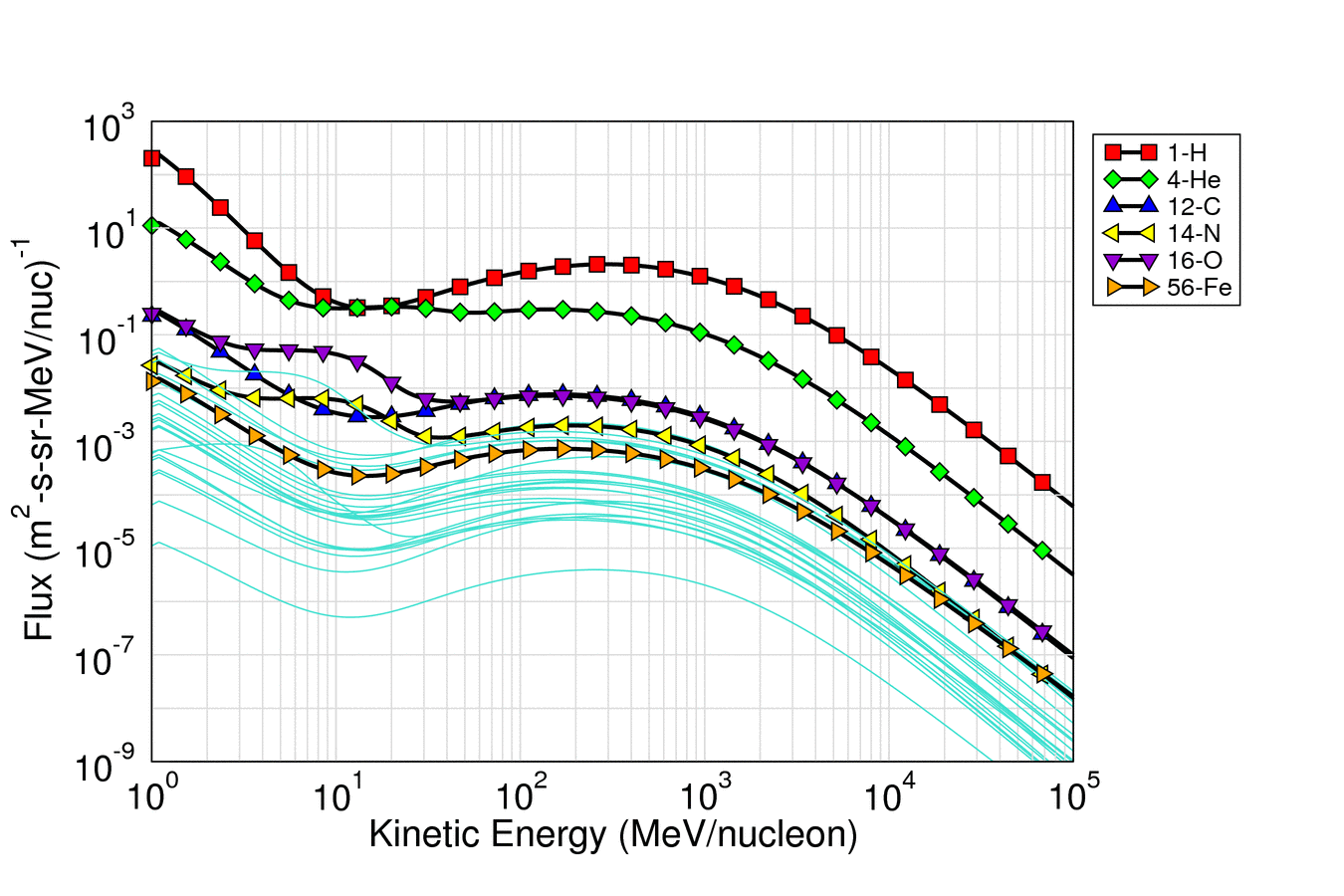Protection from Space Environment for Expanding Future Space Activities
JAXA Supercomputer System Annual Report April 2017-March 2018
Report Number: R17EG3210
Subject Category: Research and Development
- Responsible Representative: Koji Yamanaka, Research and Development Directorate, Research Unit I
- Contact Information: Aki Goto goto.aki@jaxa.jp
- Members: Aki Goto, Kazunori Shimazaki
Abstract
Our goal is to obtain the technology and knowledge to protect spacecraft and astronauts from harsh space environment for expanding future space activities. Long-term-stay under safer environment is especially required in the future manned-mission. We, therefore, address the radiation shielding technology in terms of materials for supporting the safe and long-period manned space activity.
Reference URL
N/A
Reasons for using JSS2
We use JSS2 for PHITS (Particle and Heavy Ion Transport code System) Monte Carlo simulations to estimate shielding effects of materials against space radiations. PHITS Monte Carlo simulations take a large amount of time when the computational system is large and complex, such as the system simulated manned-spaceship structure. Such simulations enable to be run at high speed with statistical accuracy by using JSS2.
Achievements of the Year
In FY2017, we focused on the galactic cosmic rays (GCR) to be protected in the Beyond Low Earth Orbit (BLEO) where a manned exploration mission will be conducted in the future, and investigated optimal shielding design against GCR by conducting calculations for using PHITS (Particle and Heavy Ion Transport Code System) code.
GCR is high energy particles that flow constantly from outside the solar system, and consists of protons (~ 85%), He nuclei (~ 14%), electrons (~ 1%), and heavy nuclei ranging from lithium to uranium. One method of reducing the exposure dose is an installation of shielding materials on the spacecraft. In terms of the limitation of transportation weight, a material having high shielding effect per mass is required as a shielding material for manned mission. It is known that low atomic number elements have high shielding effect per mass against GCR, and hydrogen (1H) is the most effective. In this study, we investigated optimal shielding thickness of polyethylene (PE, (CH2)n) which is an existing shielding material containing a large amount of hydrogen (hydrogen weight%: 14 wt%). The optimal shielding thickness of PE is different from the shielding thickness of the spacecraft (mainly composed of Al alloy) and the dose measurement position (astronauts staying position). In order to investigate the optimal thickness of PE according to the shielding thickness of the spacecraft, dose calculations were performed with a simple spherical shell geometry consisting of two layers of Al and PE.
The calculation geometry is shown in Fig. 1. A water sphere (a virtual dosimeter imitating a human body) with 30 cm diameter was installed at the center of an Al/PE two layers spherical shell with an inner diameter of 400 cm. The Al/PE spherical shell was installed so that outside was Al shell. The thickness of Al was 0 – 50 g/cm2, the thickness of PE was 0 – 60 g/cm2. The interior of the spherical shell (excluding the water region) was void. The GCR spectra were calculated using the CREME 96 model and are shown in Fig. 2. The solar activity was set as solar minimum (no flare condition), and the position of the spacecraft was set as near-earth interplanetary (no trapped particles, no geomagnetic field). The dose equivalent in the water sphere, when the GCR radiation source (proton – Ni) was isotropically irradiated to the Al/PE sphere shell geometry, was calculated by Monte Carlo calculation.
The calculation results are shown in Fig. 3. Because of the installation of PE, the dose equivalent in the water sphere was reduced by 40% at the maximum (compared with the condition without shielding material). Regardless of the shielding thickness of Al, the dose equivalent was reduced by about 34 – 40% by adding PE with about 30 g/cm2 thickness. Even if adding PE with over 30 g/cm2 thickness, shielding effect on dose equivalent nearly unchanged (shielding thickness – dose equivalent curve is almost plateau at the range of > 30 g/cm2). From this result, the addition of the shielding material with 30 g/cm2 or more thickness in the BLEO mission is useless in terms of GCR shielding. And, the addition of about 30 g/cm2 PE can be minimized the exposure dose (the achievable minimum value by passive shielding of realistic thickness) inside the spacecraft.
The future work is to reflect these results in the shielding guidelines for actual missions. We think that the addition of extra shielding materials is not necessarily needed depending on the solar activity, the mission duration / place. In the future, we plan to obtain the quantitative data that will contribute to shielding-design optimization guidelines according to the solar activity, the mission duration, and the design of the spacecraft.

Fig.3: Dependence of dose equivalent in water sphere on shielding thickness (under irradiation of GCR)
Publications
N/A
Usage of JSS2
Computational Information
- Process Parallelization Methods: MPI
- Thread Parallelization Methods: OpenMP
- Number of Processes: 5 – 24
- Elapsed Time per Case: 30,000.00 seconds
Resources Used
Fraction of Usage in Total Resources*1(%): 0.04
Details
Please refer to System Configuration of JSS2 for the system configuration and major specifications of JSS2.
| System Name | Amount of Core Time(core x hours) | Fraction of Usage*2(%) |
|---|---|---|
| SORA-MA | 0.00 | 0.00 |
| SORA-PP | 58,110.50 | 0.73 |
| SORA-LM | 0.00 | 0.00 |
| SORA-TPP | 0.00 | 0.00 |
| File System Name | Storage Assigned(GiB) | Fraction of Usage*2(%) |
|---|---|---|
| /home | 014.31 | 0.01 |
| /data | 4,978.18 | 0.09 |
| /ltmp | 2,929.69 | 0.22 |
| Archiver Name | Storage Used(TiB) | Fraction of Usage*2(%) |
|---|---|---|
| J-SPACE | 0.00 | 0.00 |
*1: Fraction of Usage in Total Resources: Weighted average of three resource types (Computing, File System, and Archiver).
*2: Fraction of Usage:Percentage of usage relative to each resource used in one year.
JAXA Supercomputer System Annual Report April 2017-March 2018




